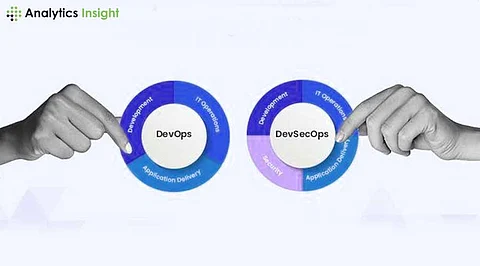

Organizations and businesses rely upon IT operations for efficient tasking nowadays. SecOps (Security Operations) and DevOps (Development Operations) are two fundamental approaches that are emerging in this field. They both focus on distinct aspects of IT operations, but they both seek to increase organizational efficiency. To optimize security and development processes, it is essential to understand the differences between SecOps and DevOps. This article delves into the definitions of SecOps and DevOps along with their differences.
DevOps refers to the first and unique methodology that unites two computer science domains. Software development is called "Dev," and information technology operations or services are called "Ops."
The DevOps methodology aims to accelerate software development and enhancement through continuous cooperation, automation, combination, and intelligence.
a. DevOps teams produce deliverables that are more consistently released, more stable, and of higher quality.
b. Communication and teamwork become stronger.
c. Without sacrificing security, you can move to a DevOps paradigm by using automated, integrated security testing solutions.
d. DevOps teams increase the frequency and velocity of releases to swiftly enhance products.
e. Early identification and repair of vulnerabilities.
a. Implementing DevOps is difficult, and for it to succeed, the entire organization must have the right mindset.
b. Considering the advantages of DevOps, enterprise security will decrease if the DevOps deployment is outsourced.
c. Managing the legacy system is difficult.
d. A DevOps environment puts security into practice for continuous delivery and integration.
e. A company has to assemble individuals with the necessary DevOps expertise if it wants to reap the full benefits of DevOps. Again, this is not a simple task.
SecOps is a combination of two distinct concepts, "Operations" and "Security." Its primary goal is to integrate security and ITOps teams to automate security tasks.
SecOps enables security teams to scale, assign tasks to other members, and mitigate security at every level. Instead of working in isolation, the security team can closely collaborate with most team members, especially those who are heavily involved in development.
a. Lowering of operating and breach expenses
b. Improvement in productivity
c. A better reputation for the company
d. Threat avoidance and mitigation for cloud security risks
e. Constant defense
f. It facilitates and enhances auditing processes.
a. A major obstacle in adopting SecOps is the required cultural change. Teams need to operate in silos, which may resist the teamwork that SecOps require.
b. It may be difficult to find expertise in both security and operations. This skill gap can cause difficulties in implementing and fully utilizing a SecOps approach.
c. It can be difficult and time-consuming to combine different security solutions into a cohesive ecosystem.
d. Implementing SecOps may require huge investments, training, and potentially new staff.
e. Maintaining a balance between robust security measures and system measures can be challenging and it may need ongoing adjustments.
SecOps and DevOps both target different facets of organizational effectiveness, and both are essential to the modern IT landscape. SecOps focuses on incorporating security at every level of IT operations to ensure data protection and threat mitigation.
DevOps emphasizes accelerating software development and delivery through collaboration, automation, and continuous integration. Both strategies seek to minimize risks, increase productivity, and streamline procedures. Firms need to comprehend and apply these approaches well if they are to prosper in the current digital era. The future of IT operations will come from the confluence of both techniques, where development and security are seamlessly interwoven to provide both speed and safety.
